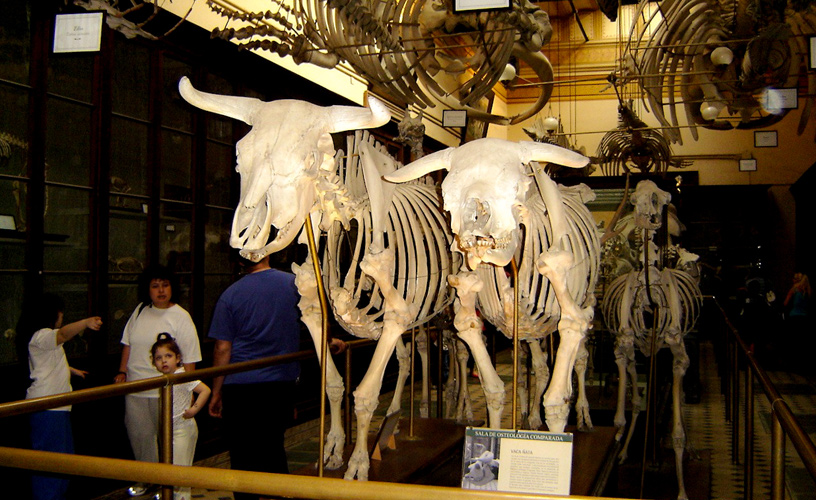Well into the Paseo del Bosque lies the Museum of Natural Sciences, which ever since 1888, when it was founded by the expert Francisco Pascasio Moreno, has housed many of the most important scientific collections in Latin America.
The building, which features Greek Roman style, has an oval structure of more than 7,000 square meters divided into 23 rooms distributed on two floors.
The entrance is guarded by two smilodons or saber-toothed tigers. These animals inhabited the Pampa lands more than 10,000 years ago. On the top of the façade, a female figure can be seen showing the globe of the world with a background of sky and stars. At the front of the building, there are busts carved of remarkable characters of the natural science world, such as Charles Darwin and Alexander von Humboldt.
La Plata Museum
It takes about an hour and a half to go round the museum, while the guided tour runs every hour at the weekends and takes around 45 minutes.
This place is worth visiting. Children and adults are fascinated after looking at each of the masterpieces that nature created millions of years ago and that can be enjoyed in the same venue today.
The Past around the Corner
As soon as we start the tour, we find ourselves in a dilemma as to where to go next. It is convenient to follow and anti-clockwise direction in order to understand the timeline which goes from past to present paying equal attention to the objects displayed as well as the screens strategically located in the rooms. The screens explain the concept of evolution in a modern and interactive way.
On the ground floor, we find the rooms dedicated to the planet Earth, time, matter, paleontology, zoology and mineralogy. The display is so diverse that it generally entertains and divides the focus of interests of children and adults.
Meanwhile, adults prefer the molecule structure of the DNA and the American vegetable samples such as mushrooms, algae, fruit, roots and seeds that have fed the natives for millions of years.
The museum used the first floor for the development of the American cultures from the most ancient stages. It houses a major collection of Pre-Columbian ceramics, fabrics made by the earliest inhabitants of the Andes with woven llama hair, and small recreations of lifestyles in different regions of our country.
Lastly, the Egyptian room is worth visiting since it is packed with artifacts of this culture. They were found by a group of Argentinian archeologists in excavations carried out in Sudan.
Pablo Etchevers
Pablo Etchevers





















